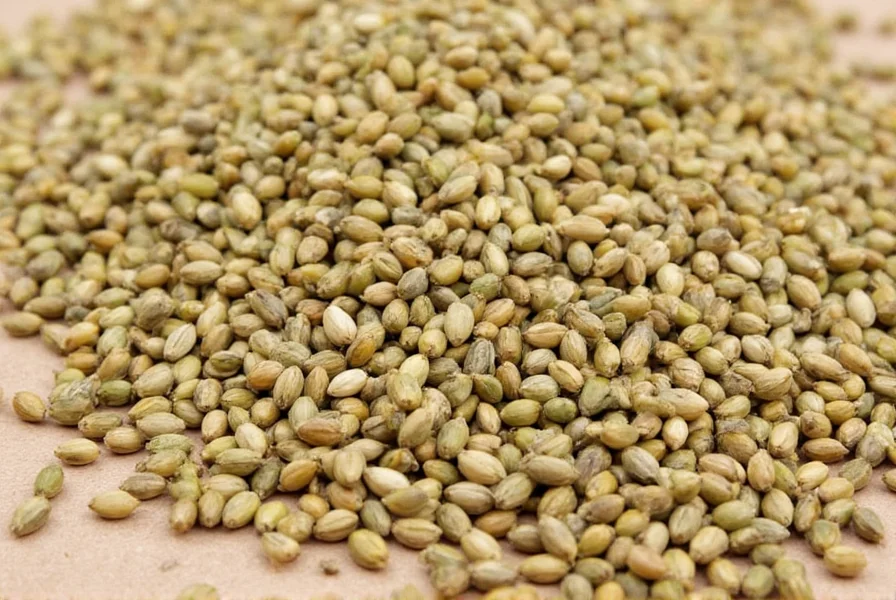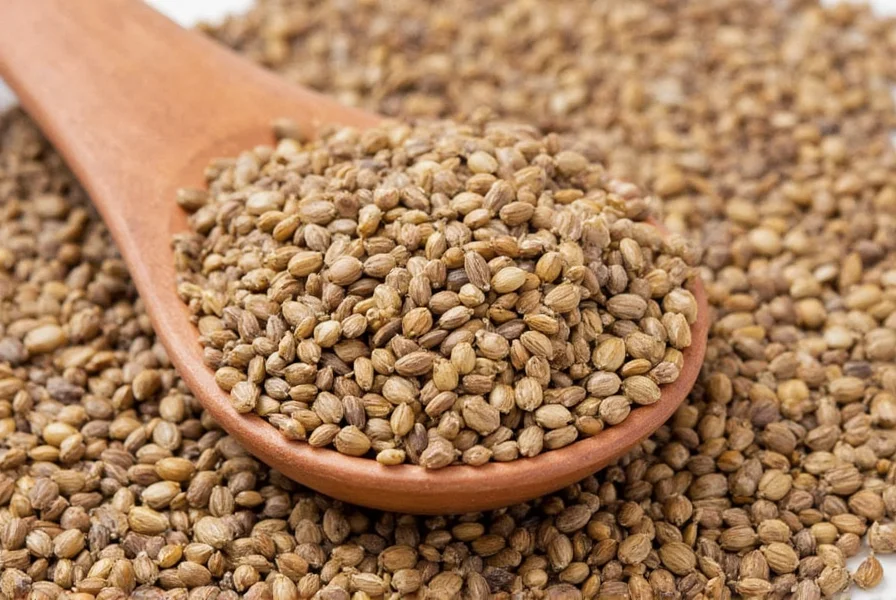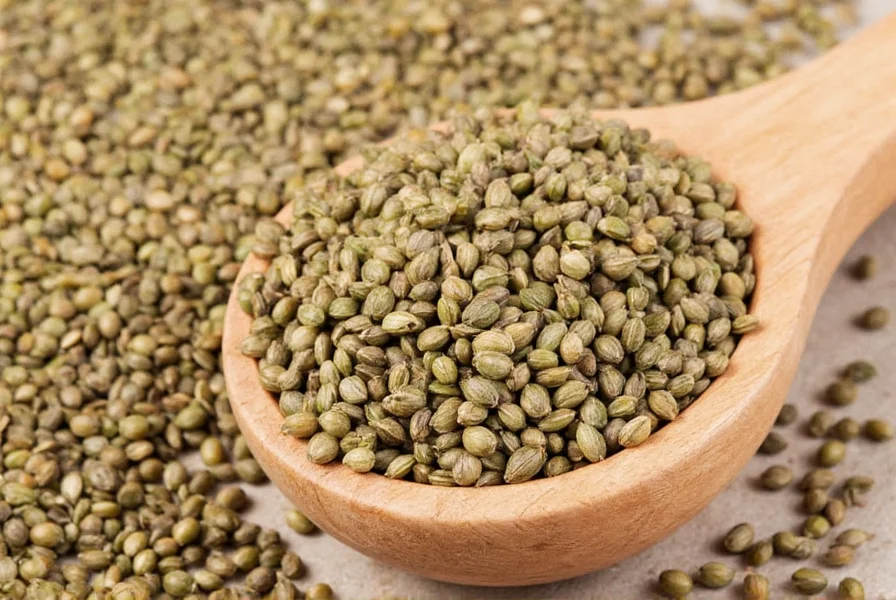Coriander seeds have been valued across culinary and medicinal traditions for millennia. Understanding their comprehensive properties helps maximize their potential in both kitchen and wellness routines. Let's explore the multifaceted characteristics that make these tiny seeds so remarkably versatile.
Physical Characteristics of Coriander Seeds
Coriander seeds measure approximately 3-5mm in diameter with a circular to slightly oval shape. Their surface features five distinct longitudinal ridges that give them a characteristic ribbed appearance. Freshly harvested seeds have a pale yellow to light tan color that deepens to warm brown as they mature. The seeds possess a hard outer shell protecting the oily interior, which releases their signature aroma when crushed. This unique physical structure contributes to their extended shelf life compared to many other spices.
| Physical Property | Specification |
|---|---|
| Size | 3-5mm diameter |
| Shape | Rounded to slightly oval |
| Surface Texture | Five longitudinal ridges |
| Color | Pale yellow to light brown |
| Density | Approximately 0.65 g/cm³ |
Chemical Composition and Nutritional Profile
The chemical composition of coriander seeds reveals why they're nutritionally valuable. Each 100g serving provides 298 calories, 12.3g protein, 54.9g carbohydrates, and 17.8g dietary fiber. They're particularly rich in essential minerals including iron (17% DV), magnesium (77% DV), and calcium (70% DV) per ounce. The volatile oil content ranges from 0.3-1.0%, with linalool comprising 60-70% of this essential oil fraction. Other significant compounds include pinene, terpenes, and flavonoids that contribute to their antioxidant properties.
Research published in the Journal of Agricultural and Food Chemistry confirms coriander seeds contain potent antioxidants that combat oxidative stress. These nutritional properties of coriander seeds make them valuable for supporting metabolic health when incorporated into balanced diets.

Culinary Properties and Flavor Profile
Coriander seeds deliver a complex flavor profile that transforms dramatically when heated. Raw seeds offer citrusy, slightly sweet notes with subtle floral undertones. When dry-roasted, they develop warm, nutty characteristics with hints of sage and lemon. This transformation occurs because heat activates the terpene compounds while reducing the grassier notes.
Chefs leverage these culinary properties of coriander seeds in multiple ways:
- Whole seeds work well in pickling brines and slow-cooked dishes
- Crushed seeds release more oil for marinades and spice rubs
- Ground coriander integrates smoothly into batters and doughs
- Dry-roasted seeds enhance flavor complexity in curries and stews
The seeds pair exceptionally well with cumin, turmeric, and chili in spice blends. Their mild bitterness balances sweet ingredients in baked goods, while their citrus notes complement fish and poultry dishes. Understanding how to utilize these properties ensures optimal flavor extraction in various cooking applications.
Medicinal Properties Supported by Research
Traditional medicine systems have long recognized the medicinal properties of coriander seeds, and modern science increasingly validates these uses. Clinical studies demonstrate several evidence-based health benefits:
A 2020 study in Nutrients journal found coriander seed extract significantly reduced blood glucose levels in participants with type 2 diabetes. The seeds' high fiber content and specific compounds appear to slow carbohydrate digestion and improve insulin sensitivity.
Research in the Journal of Ethnopharmacology confirms coriander seeds possess notable anti-inflammatory effects. The linalool content inhibits inflammatory pathways, potentially reducing symptoms in conditions like arthritis. Additionally, the seeds demonstrate antimicrobial properties against foodborne pathogens including E. coli and Salmonella.
Digestive health represents another key area where coriander seeds deliver benefits. Their carminative properties help relieve bloating and gas, while stimulating bile production aids fat digestion. Many cultures traditionally use coriander seed tea to soothe digestive discomfort.
Optimal Storage Methods and Shelf Life
Understanding how to store coriander seeds properly preserves their valuable properties. Whole seeds maintain freshness significantly longer than ground coriander due to reduced surface area exposed to oxygen. For maximum longevity:
- Store in airtight glass containers away from light
- Keep in a cool, dry location (below 70°F/21°C)
- Avoid humidity exposure which causes clumping
- Consider refrigeration in humid climates
Properly stored whole coriander seeds retain optimal flavor for 6-12 months. Ground coriander loses potency more quickly, typically within 3-6 months. Freezing extends shelf life to 1-2 years with minimal quality loss. The seeds' essential oil content gradually diminishes over time, so checking for strong citrus aroma helps determine freshness.

Coriander Seeds vs. Fresh Coriander: Understanding the Differences
Many confuse coriander seeds with fresh cilantro (coriander leaves), but they possess distinctly different properties. While both come from the same plant (Coriandrum sativum), their chemical compositions vary significantly:
- Seeds contain higher concentrations of linalool (60-70%) versus leaves (20-30%)
- Leaves feature more aldehydes creating the polarizing "soapy" note some detect
- Seeds offer warm, citrusy notes while leaves provide bright, grassy flavors
- Nutritionally, seeds contain more fiber and minerals while leaves have higher vitamin content
These differences explain why recipes specify either seeds or leaves—their properties don't substitute equally. Understanding these distinctions helps cooks leverage each form's unique characteristics effectively.
Practical Applications in Daily Life
Incorporating coriander seeds into daily routines maximizes their beneficial properties. For digestive support, steep one teaspoon of crushed seeds in hot water for 10 minutes to create a soothing tea. When cooking, dry-roast whole seeds in a skillet over medium heat for 2-3 minutes until fragrant before grinding—this technique enhances their warm, nutty flavor profile.
For natural preservative effects in homemade pickles, add whole coriander seeds to the brine. Their antimicrobial properties help maintain freshness while contributing flavor. In baking, incorporate ground coriander into bread doughs or cookie recipes for subtle complexity that complements sweet ingredients.
Those exploring the health benefits of coriander seeds might consider adding them to smoothies or oatmeal. A quarter-teaspoon of freshly ground seeds provides flavor and nutrients without overwhelming other ingredients. Consistent, moderate consumption delivers the most significant long-term benefits.
Frequently Asked Questions
What are the key chemical compounds in coriander seeds?
Linalool comprises 60-70% of the essential oil content in coriander seeds, giving them their characteristic citrus aroma. Other significant compounds include α-pinene, γ-terpinene, and various flavonoids that contribute to their antioxidant properties. The seeds also contain notable amounts of dietary fiber, iron, magnesium, and calcium.
How do coriander seeds affect blood sugar levels?
Research shows coriander seeds may help regulate blood sugar through multiple mechanisms. Their high fiber content slows carbohydrate digestion, while specific compounds appear to stimulate insulin secretion and improve insulin sensitivity. A 2020 study in Nutrients journal found significant reductions in fasting blood glucose levels among participants with type 2 diabetes who consumed coriander seed extract regularly.
What's the best way to grind coriander seeds for maximum flavor?
For optimal flavor extraction, dry-roast whole coriander seeds in a skillet over medium heat for 2-3 minutes until fragrant, then immediately grind them. Use a spice grinder or mortar and pestle for best results. Grinding just before use preserves the volatile oils that give coriander its distinctive aroma. Avoid pre-ground coriander when possible, as it loses potency quickly due to increased surface area exposed to oxygen.
Can coriander seeds help with digestive issues?
Yes, coriander seeds have carminative properties that help relieve bloating, gas, and indigestion. They stimulate bile production which aids fat digestion and contain compounds that relax gastrointestinal muscles. Many traditional medicine systems recommend coriander seed tea for digestive discomfort. The seeds' antimicrobial properties also help maintain healthy gut flora balance.
How long do coriander seeds stay fresh after grinding?
Ground coriander loses potency significantly faster than whole seeds. While properly stored whole seeds maintain optimal flavor for 6-12 months, ground coriander typically retains good quality for only 3-6 months. The increased surface area exposes more volatile oils to oxygen and light, accelerating flavor degradation. For best results, grind coriander seeds immediately before use rather than storing pre-ground spice.











 浙公网安备
33010002000092号
浙公网安备
33010002000092号 浙B2-20120091-4
浙B2-20120091-4